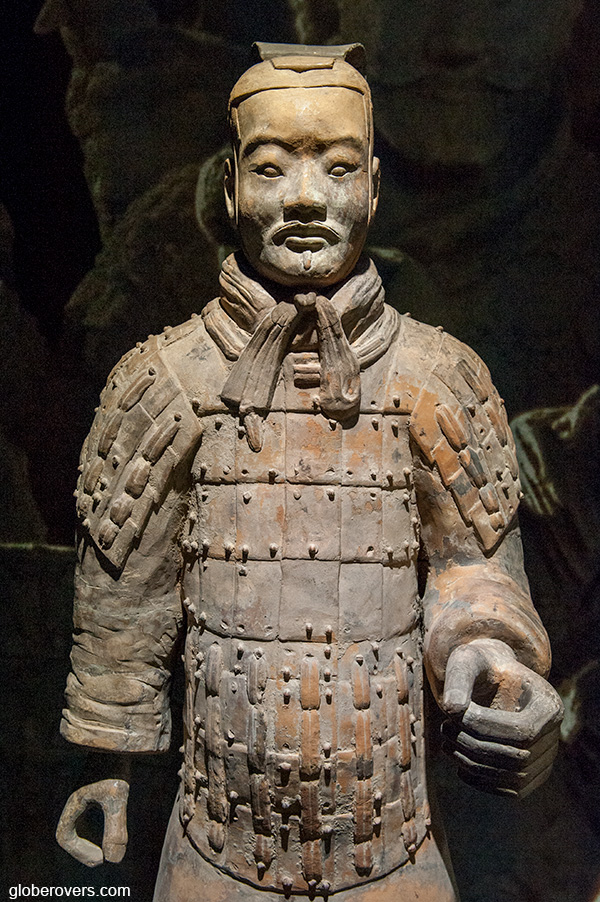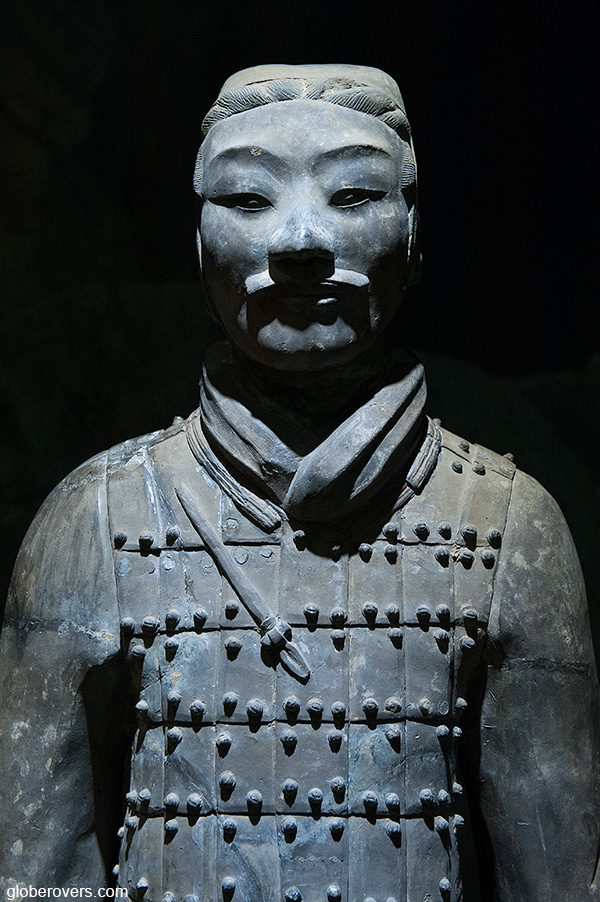
Interred for more than 2,150 years, the “Terracotta Warriors and Horses” is a large collection of terracotta (clay-based unglazed ceramic) sculptures depicting the armies of Qin Shi Huang Di. Located in the Emperor Qinshihuang’s Mausoleum (the building was constructed over the original site without moving the statues), it is about 40 kilometres to the northeast of the walled city of Xi’an.
It is estimated that there are about 6,000 to 8,000 soldiers, 130 chariots with 520 horses, and 150 cavalry horses, the majority of which are still buried in the pits
While we are waiting for the Emperor’s tomb and many more pits to be excavated, there currently is so much to see that it takes a full day to appreciate the exhibits on display.
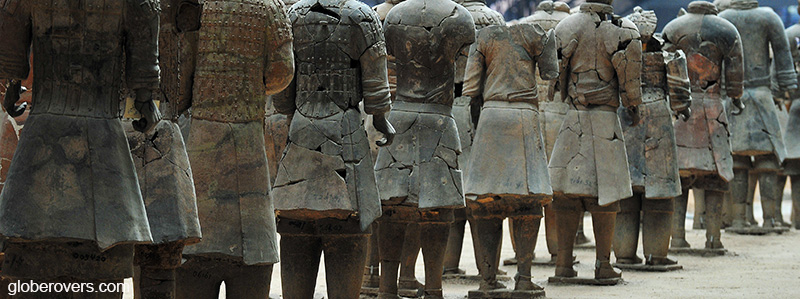
When not spending time at the warriors, make sure to explore the city of Xi’an, in particular the old city inside the ancient city walls – which includes the Muslim Quarter and the Great Mosque as well as the Bell & Drum Towers. Outside the city walls are the Shaanxi Provincial History Musuem, the Big Wild Goose Pagoda inside Daci’en Temple, and the Huaqing Hot Springs.
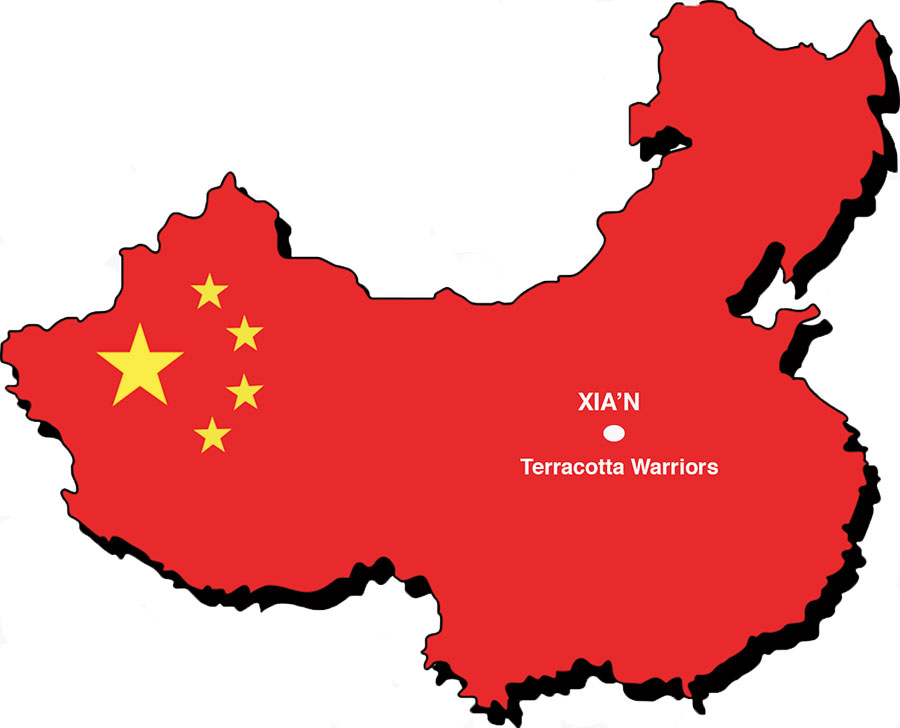
Why travel to Xi’an in China?
- The low-down: China’s Terracotta Warriors is often listed as one of the must-see-before you die. While I won’t put it near the top, it sure is an amazing sight and has an even more amazing story behind it. Make sure you see it before you die!
- The brightest highlight: The old walled city of Xi’an, China, is filled with historical buildings and a very authentic Muslim Quarter with bazaar and mosque. However, the most spectacular attraction of Xi’an is the Army of Terracotta Warriors – all 8,000 soldiers, 130 chariots with 520 horses, and 150 cavalry horses…
- Intrepid destination: Not at all. Nowadays the “museum” can get very crowded so choose the right time of the year and day to visit or you will be outnumbered by the thousands of happy snappy visitors!
- Globerovers score (10 is highest): It is great to see and if there are not too many visitors its an amazing experience. Still, it does not get more than 7/10 on the Globerover’s Score.
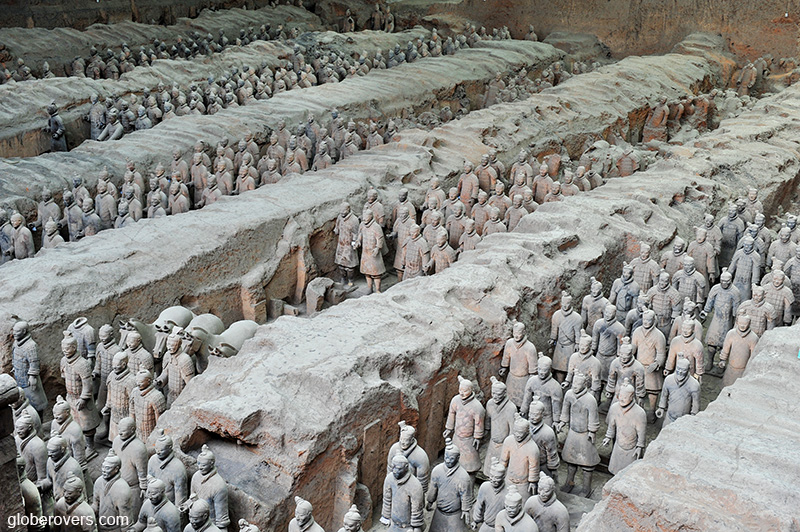
Army of Terracotta Warriors and Horses
Xi’an, the capital of Shaanxi province, is a city with more than 8.5 million inhabitants located in central east China. It is one of the oldest cities in China with a history spanning more than 3,000 years.
Just 40 km northeast of the old city of Xi’an lies one of China’s most amazing attractions. Welcome to the Army of Terracotta Warriors and Horses which relatively recently became one of the greatest archaeological discoveries of modern times.
Buried for over 2,200 years, the terracotta statuary is considered to be the most important archaeological discovery of the 20th century
Accidentally discovered by peasant farmers digging a water well in 1974, the “Terracotta Army” or the “Terracotta Warriors and Horses” is a large collection of terracotta (clay-based unglazed ceramic) sculptures depicting the armies of Qin Shi Huang Di.
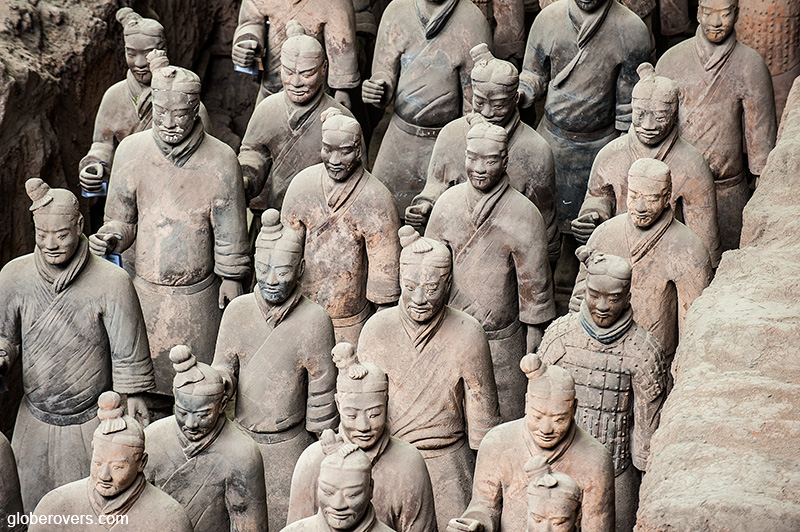
On the death of his father, Yiren, in 246 BC, he took the throne at the tender age of 13 under the birth name of Ying Zheng. By 221 BC he had unified the entire civilised world as he knew it, declared himself as the Emperor of China, and took on the name of Qin Shi Huang Di, translated as “First Emperor of Qin”.
It is estimated that there are about 6,000 to 8,000 soldiers, 130 chariots with 520 horses, and 150 cavalry horses, the majority of which are still buried in the pits
He accomplished quite a lot during his life. He invested in infrastructure and built massive fortifications, road networks that likely exceeded 6,500 km, and on the northern frontier he created a bulwark against the invaders.
Made of rammed earth, these fortifications became the earliest foundations of the Great Wall of China, most of which would be rebuilt in stone and brick during the 15th century AD.
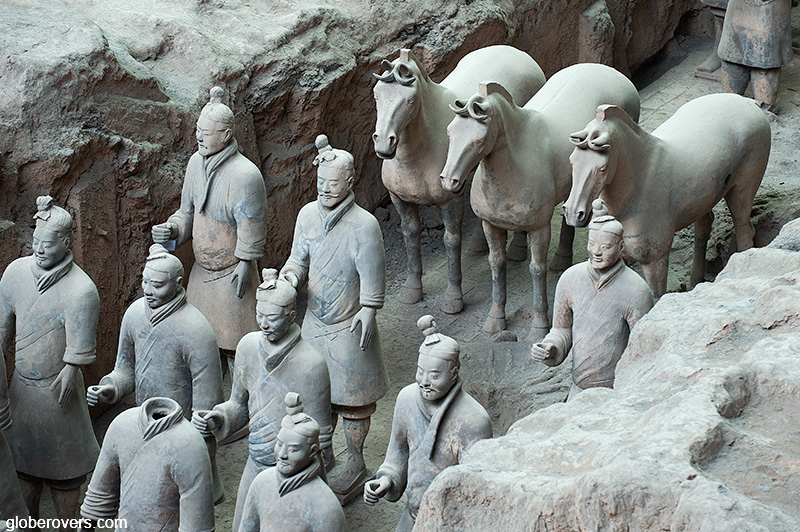
The new Emperor also interlinked the states with canals, and he standardised the coins, weights, and measures.
Full of himself, shortly after taking to the throne he ordered more than 700,000 labourers to work on his tomb.
The Emperor was told he could live eternally by consuming magical herbs which were to be found on the Islands of the Immortals in the East China Sea. After several search parties failed to retrieve the herbs, the Emperor decided to lead the next search party himself. Sadly, instead of collecting the life-preserving magical herbs, the Emperor contracted a fatal illness.
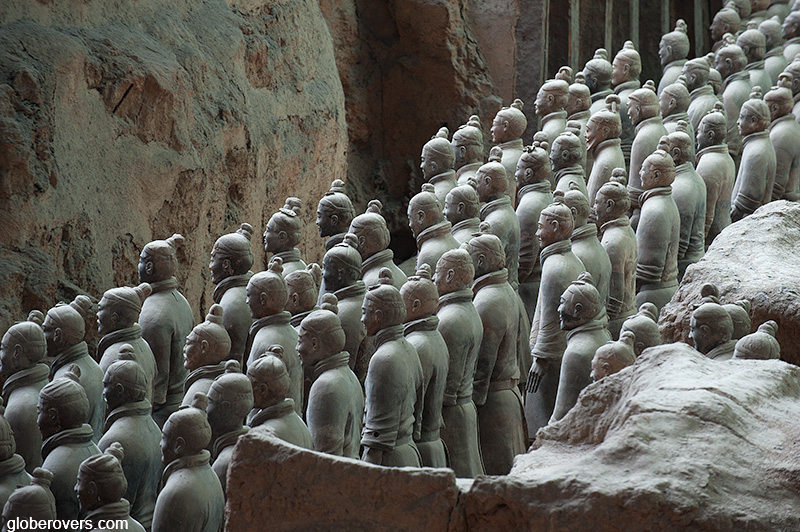
At his death in 209 BC the massive tomb project was halted prior to completion of his full plans. Fortunately, the Emperor did leave us with his tomb and the Army of Terracotta Warriors and Horses.
Upon the death of Emperor Qin Shi Huang Di the land was in turmoil. As order broke down, rogue forces raided the pits where clay soldiers stood guard and plundered their real weapons.
Following the ransacking, fires were set which destroyed the support pillars so the ceilings crashed down and smashed the figures. Today there is still evidence of the destruction and char marks can be clearly seen on some of the remaining wooden columns.
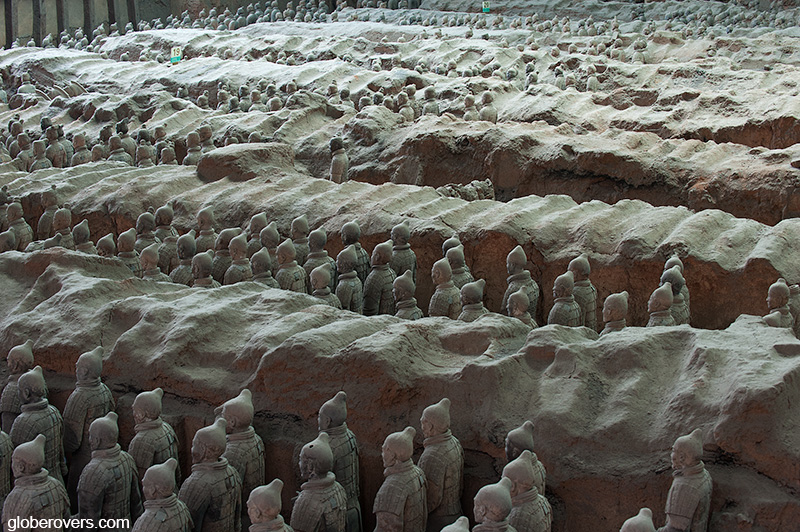
Interred for more than 2,150 years, an entire army of life-size terracotta soldiers and horses have been standing just a few metres underground. Since the first discovery by the farmers, archaeologists have located some 600 pits with complex underground vaults.
While much of the area still has to be excavated, what we can see today are three pits with some 1,900 terracotta soldiers and their entourage.
The clay soldiers each have unique facial expressions and vary in height according to their military roles with the tallest being the highest ranking generals.

Though the statues appear largely grey today, patches of paint hint at once brightly coloured clothes which sadly have faded significantly over the years, in particular since exposure to the light after being unearthed.
The rows of clay soldiers are in trench-like underground corridors and in some of the corridors the clay horses are aligned four abreast and behind them are the wooden chariots.
The entourage of horses, horse-drawn chariots, and weapons are all meticulously created from clay, copper, wood, and other materials.
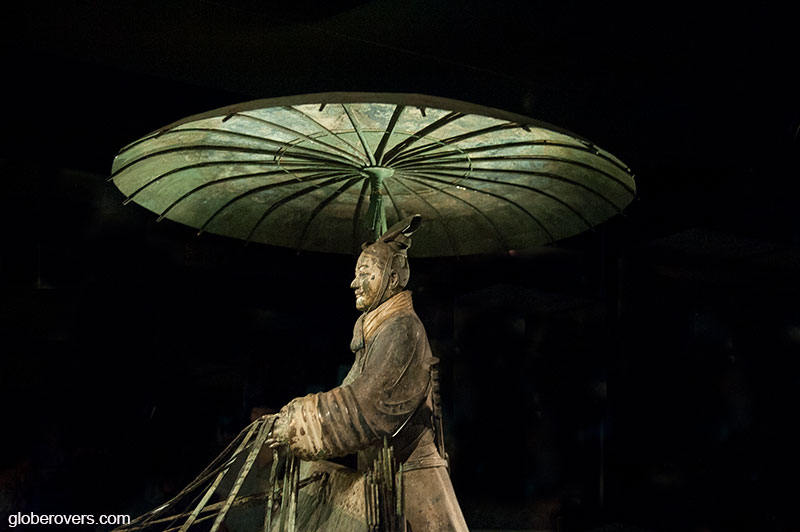
Excavations have also revealed swords, arrow tips, and other weapons, mostly in pristine condition. An empty fourth excavated pit is likely part of the unfinished work.
One of the great mysteries remains about the contents of the Emperor’s own tomb which has not yet been excavated.
According to historians, the tomb should be filled with fine vessels, precious stones and other rarities. Some pits excavated around the Emperor’s tomb have revealed terracotta dancers, musicians, acrobats caught in mid-performance, delightfully realistic waterfowl crafted from bronze and serenaded by terracotta musicians.
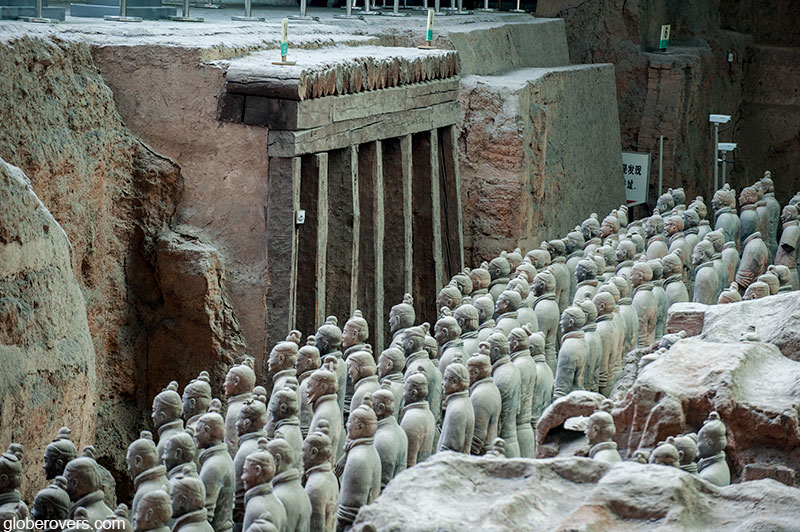
In addition, an entire necropolis built for the Emperor has been found surrounding the Emperor’s tomb. It contains models of palaces, pavilions and offices and is filled with replicas of the area’s rivers and streams made with mercury flowing to the sea through hills and mountains of bronze. Pearls are said to represent the sun, moon, and stars.
The current museum at the excavation site covers an area of 16,300 m² and is divided into three sections. Pit 1 opened to visitors in 1979 and contains about 6,000 terracotta figures of soldiers and horses facing eastwards in a rectangular array, each one either armed with a spear, dagger or halberd.
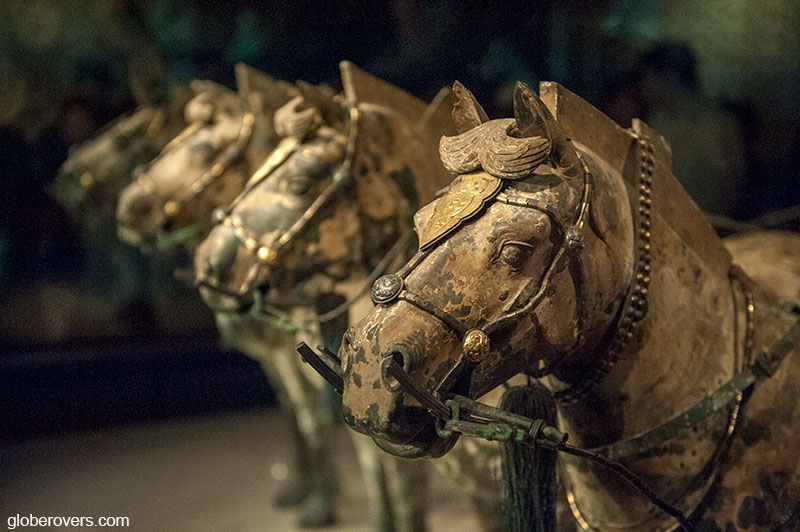
This was the first exhibition to open to the public after the discovery of the pits in 1974. This is also currently the largest exhibition and the most impressive.
Pit 2 was found in 1976 and opened to the public in 1994. It contains rows of kneeling and standing archers, chariot war array, and mixed forces with infantry, chariots and troopers standing in a rectangular array.
Pit 3, the smallest, was also found in 1976 and opened to the public in 1989. It contains warriors and chariots and it is speculated that it was built to be the command post for the soldiers in other pits.

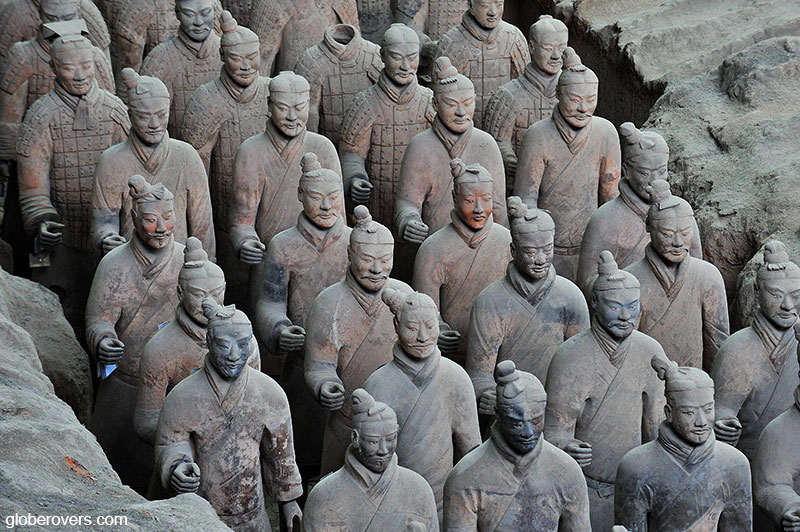
The Old City of Xi’an
Surrounding the old city of Xi’an is its ancient city walls. These walls are the most complete city walls that have survived in China and are also regarded as one of the largest ancient military defensive systems in the world. Built in Tang Dynasty (618 -907) and enlarged during Ming Dynasty (1368-1644), the walls are 12 metres tall, 12 to 14 metres wide and 14 kilometres long – of which large parts can be walked or cycled. A deep moat surrounds the city walls. Its southern gate, with its suspension bridge, is the largest and the best gateway to walking on the wall. Walking or cycling on the wall can be done roughly from 8am to 8pm and costs about 40 RMB.
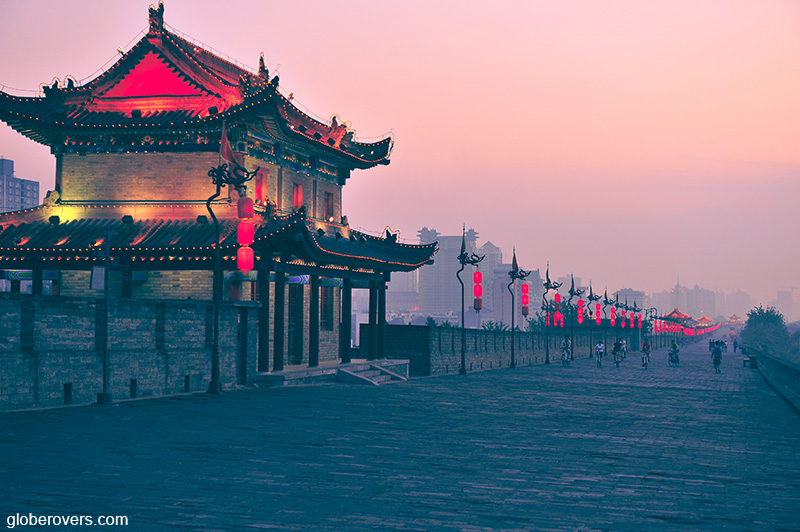
The Xian Muslim Quarters is located within the surrounding city walls, north of the Drum Tower. The highlight of this area is the bazaar with its large area of stalls selling everything – including lots of interesting food prepared along the pedestrian streets. Shopping along these tiny streets is quite interesting as there are many cheap and unique items which are hard to find anywhere else in China.
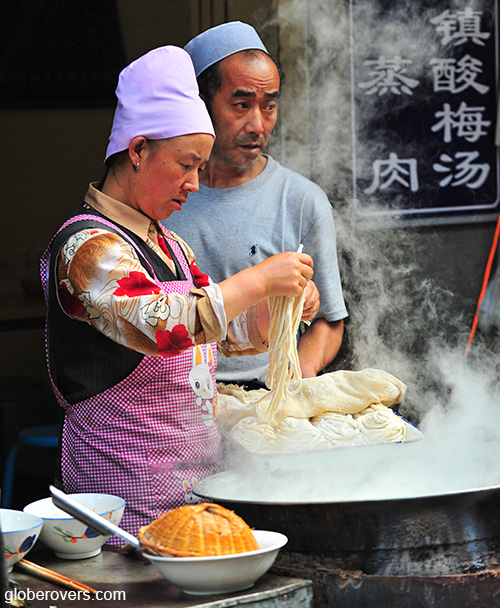
The nearby Bell and Drum Towers date back to the Ming dynasty (1368-1644). From the top of the Bell Tower is a panoramic view of the Xian City while the top of the Drum Tower offers a bird’s eye view of the Muslim Quarters.
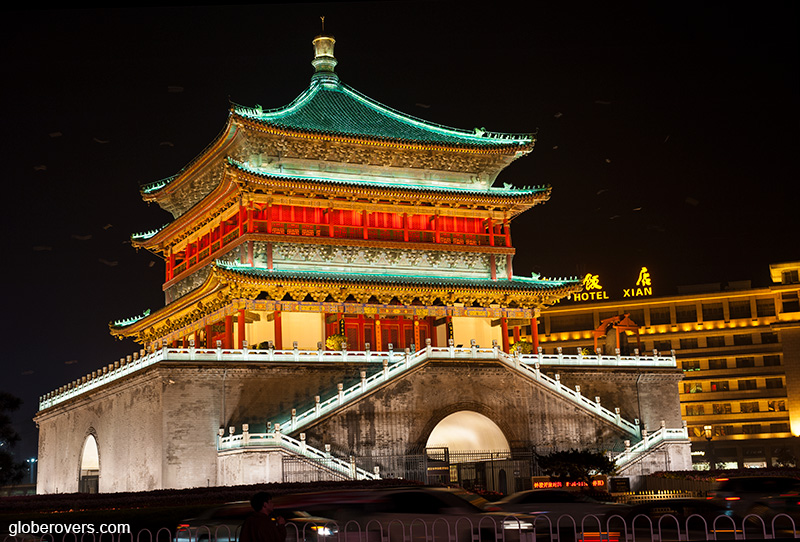
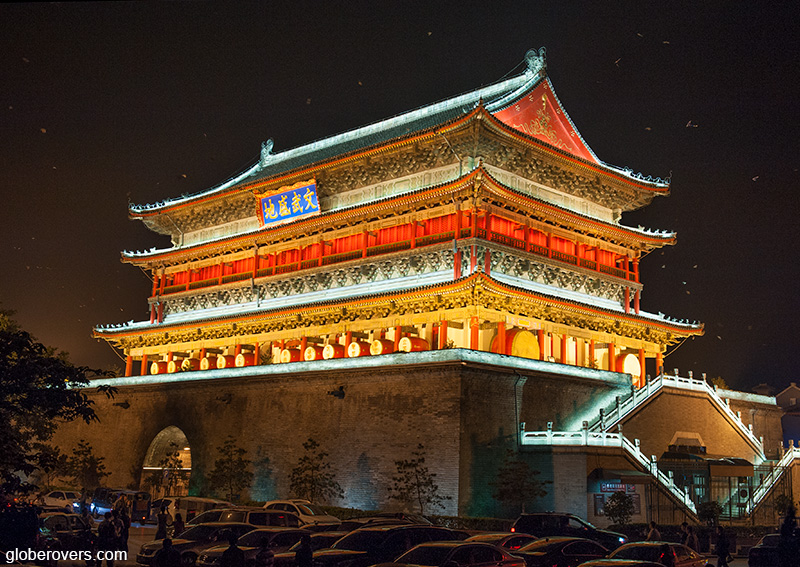
Also in the old city is the Great Mosque of Xian which is one of the oldest, largest and best-preserved Islamic mosques in China. The mosque is completely Chinese in its construction and architectural style, except for some Arabic lettering and decorations.
Essential Information
Getting There
Fly into the international airport of Xi’an, or get here by bus, car or train from anywhere in China.
When to Go
Xi’an is very cold in the winter and very hot in the summer but it is an all-year destination.
Getting Around
From the main railway station a special fleet of buses frequently depart to the Terracotta Warriors Museum.
Where to stay
Stay within the old walled city of Xi’an where there is a wide variety of hotels.
Cost of travel
While the cost of travel in China has substantially increased over the past few years, is it still reasonably priced compared to developed countries.
☛ Read more: Blog posts of China

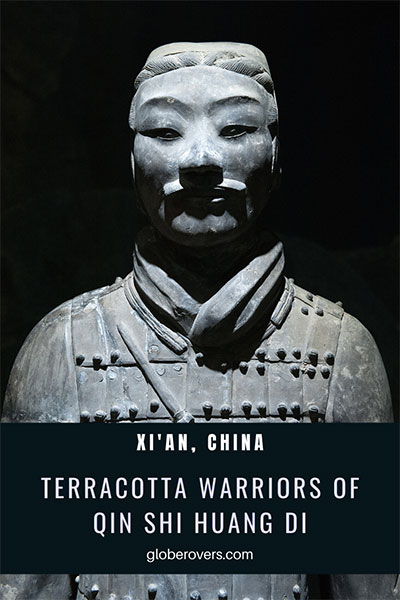

Blog post and photos by Peter who has been travelling almost full-time since 2005 and has been to over 122 countries. He visited several countries, such as Japan, more than 20 times. Peter is Editor-in-Chief and Publisher of GlobeRovers Magazine, an independent travel magazine focused on intrepid destinations.

